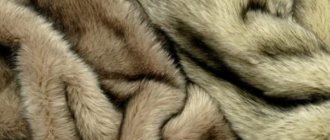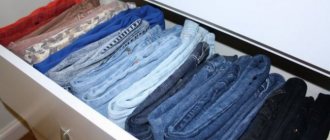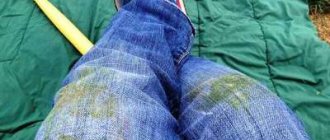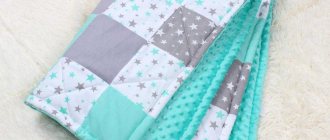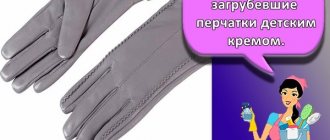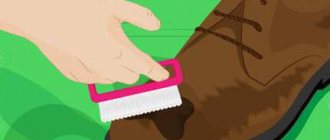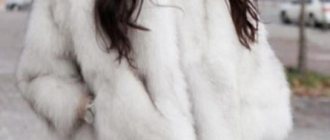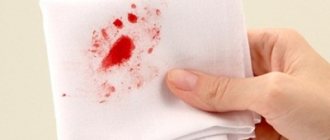How to wash sheep wool (raw): step-by-step instructions
If you decide to take up handicrafts and have purchased raw sheep wool for your purposes, then do not rush to put it into use right away.
First you need to clean and wash it. Unprepared wool still contains the smell of sheep and contains a lot of debris and dust. It’s simply unpleasant to touch, and there’s no question of using it at all. It is not so easy to wash it; if you do it incorrectly, you will simply ruin the sheepskin. First, you should carefully study how to wash sheep’s wool, what products are needed for this, and how to dry it. This is what we will talk about now. Be sure to prepare for this process. Gather all the necessary tools and cleaning supplies. You can’t just wash the raw material in the sink with soap, it will only ruin the material.
You will need the following wool washing products:
- Detergent for wool products. It is better not to wash with regular powder, as it is difficult to wash out and can destroy the structure of the fibers. As a last resort, you can use regular shampoo or pet wash gel.
- Dishwashing gel or other grease remover.
- Mesh, wire rack, colander and container in which you will wash. The ideal solution is a cat litter box with a grid.
The mesh is necessary to make it easy to lift and lower the wool into the water; it is not advisable to touch it, and it will be inconvenient to collect it when changing the water, which will happen often.
- Respirator. Wet wool has a specific, unpleasant odor, so it is better to cover your nose.
- Gauze or mesh on which the wool strands will dry.
- Hair comb, wooden comb.
How to wash sheep's wool at home - step-by-step instructions
What you will need:
- hot water;
- sink, large bathtub or top-loading washing machine;
- several mesh laundry bags;
- soap dish;
- rubber gloves (dishwashing gloves);
- sweater dryer.
Instructions
Step one. Fill the sink with hot water and dissolve laundry soap. The amount of soap depends on your canvas.
Step two. Wearing rubber gloves to protect your hands from hot water and dirt, carefully place the mesh bag of wool into the water. Keep the bags under water until the contents are wet.
Step three. Leave for thirty minutes - the water should cool slightly, but not completely. If you leave wool in water that gets cold, the lanolin will simply settle on the fiber, and this will not lead to anything good.
Step four. Drain the dirty water, add more hot water and add soap again. Do not allow water to get directly onto the fur! If you are using a sink, you can move the bags to the side.
Step five. Place the bags back into the water and leave them for half an hour. Depending on how dirty the canvas was, you can repeat steps three and four as many times as needed.
Step six. Rinse thoroughly in warm water.
Step seven . Gently press the bags against the side or bottom of the sink to release most of the water. Do not roll or twist the wool!
Step eight. To dry the wool, lay it out on a vertical surface - this may take several days depending on the weather and humidity.
Washing step by step
- Sort through all the sheep's wool. Remove large debris, straw, and grass from it. To make the process go faster, you can take a comb (for example, a comb for cats or dogs) and comb out the sheepskin. Additionally, you can knock out the trash with a stick. This method has been used since ancient times.
- Fill a container with hot water and dilute the grease removing gel in it. This is a very important stage, since it is impossible to wash sheep’s wool without rinsing off the lanolin. Lanolin is a natural animal fat that is secreted from the skin of sheep and remains on the wool.
- Place the sheep's wool on a wire rack and place it in the prepared water. Lower and raise the screen for 5-10 minutes, change the water, add detergent and lower and raise again. There is no need to stir or wring out the sheep's wool; it is better not to touch it so as not to damage it.
- After half an hour of such manipulations, drain the soapy water, rinse under pressure with hot water and add a new one, diluting wool detergent in it. You need to wash in hot water, since at high temperatures the fat wax will dissolve faster, and the wool fibers will not mat.
- Soak the sheepskin for one and a half to two hours, changing the soap solution every half hour. If the water cools faster, change it more often. Temperature shock should not be allowed.
- Drain the soap solution one last time and fill with clean hot water. Rinse the wool, again wash only with a net. Change the water. Repeat the procedure until all the dirt and soap solution are washed away.
To keep your hair curls from becoming matted, shiny and easy to comb, you can treat them with a balm for oily hair. Gently spread the balm, leave for 20-30 minutes, rinse under running warm water.
- Carefully separate the wool into strands and place them on gauze or mesh to dry. Spread out in an even layer, no more than 1.5 cm thick, otherwise it will not dry well or fall off.
- Dry in a well-ventilated place. Better outdoors in the sun. In apartment conditions, it is allowed to install it near the battery.
This completes the washing of sheep's wool. As you can see, this process is different from how to wash wool items. After all, finished products have already undergone all the necessary processing and their cleaning is much easier, although it has many limitations.
Further work with it depends on what exactly you are going to do. For example, if this is hair for a doll, and you want to get curly locks, then after drying the wool strands do not need to be combed. Just take them apart.
Basic rules of care
Raw wood should be handled with special care, since it does not tolerate exposure to hot boiling water, aggressive detergents, or strong mechanical stress. Freshly sheared sheepskin is processed carefully; it should have minimal contact with your hands during washing.
Combing sheep's wool is an important step.
Experiments with washing powders are dangerous - such detergents have a special chemical structure, are poorly washed out of wool fibers, and can damage them. Before washing the sheared sheep's wool, you need to carefully sort it out and remove large specks, then comb it out with a comfortable, fine-toothed brush. A wooden comb is ideal for the procedure, which is used to comb dogs, cats, and other long-haired animals.
How to wash sheep's wool at home step by step:
- Before washing sheep wool, prepare a large container; in addition, you can take a colander and a mesh (they will come in handy when immersing the fleece in water). Think about how to protect your respiratory tract - fleece smells very unpleasant when wet, which is dangerous for allergy sufferers, and can cause nausea with a sensitive sense of smell.
- Pour cold water into a basin or other container, immerse the fleece in it, make sure that the water completely covers the item. Soaking takes 12 hours and makes washing easier.
- Drain the water from the basin, fill with hot water up to 70 degrees.
- Pour powder or washing gel (optimally) into another container; you can use folk remedies. Pour hot water over the product and wait until it is completely dissolved. For 10 liters of water take an average of 30 g of powder.
- Pour foam into a container filled with water, mix everything thoroughly, and lower the fleece into the solution. To protect against matting, you can perform immersion on a mesh - the wool is laid out on it, and then the base is lowered into water.
- Immerse the raw material in water and remove it for several minutes - this will wash off the lanolin. Do not rub the threads with your fingers, as this will cause them to deform. In total, do 5-7 approaches in 20 minutes, changing the water each time.
- Place the sheepskin on a wire rack, fill the container with hot, clean water without powder, and rinse thoroughly. Liquid supplied from a hose under pressure washes away soap residues well.
- Change the water again, add detergent to it, and soak the sheepskin in the container for about 2 hours. It is optimal to change the solution every 30 minutes; if the item is new (there is a lot of lanolin on the threads), a worn one can simply be soaked.
- Using a net, rinse the sheepskin in clean water. Repeat the procedure until you realize that the water has cleared.
- Treat the coat with a balm designed to care for oily hair - this will prevent matting and add shine. You can skip this step. Apply the balm with your palm, spread it over the fleece, then rinse with warm water.
This completes the washing - all that remains is to properly dry the raw material. The most difficult will be the first wash - due to the large amount of lanolin, which is difficult to remove from the threads. In the future, when washing vests and sheepskin chuney, the procedure will be simplified (we wrote about how to wash ready-made sheepskin items in a separate blog review).
What does washed wool look like and not?
Important cleaning tips
Hair-covered floors and furniture not only spoil the appearance of your home, but also create psychological discomfort.
Fighting fur can be like tilting at windmills if you don't follow certain rules.
Cleaning frequency
If there are animals in the house, cleaning should be carried out more often than usual, and during the molting period - daily.
When there are small children in the family, you will have to clean up twice a day if cats and dogs live in the apartment.
Proper pet care
Owners of long-haired animals are required to perform hygiene procedures, which include combing the undercoat daily. For other breeds, such manipulations are necessary in spring and autumn, during the molting period. This will not only make it easier to maintain cleanliness in the apartment, but will also protect animals from swallowing hair while licking.
Monitor the health of the animal
Excessive hair loss between shedding means that the cat or dog is sick or their diet lacks the necessary vitamins and microelements. Such an animal must be urgently shown to a veterinarian to avoid infection with ringworm.
Permanent place to stay overnight
If a cat or dog does not have a specific place to rest and sleep, then the fur will spread throughout the apartment. When an animal sleeps in a certain place, the largest amount of hair lost will be there. It’s easier to shake out the fur 2-3 times a day or change the bedding than to clean the entire apartment.
The best ways to clean a carpet
The most labor-intensive process in hair removal is cleaning carpets. The longer the pile of pure wool floor products, the more difficult it is to remove the hair that gets stuck there, especially from the undercoat.
The method of cleaning wool depends on the material of the floor product (natural or artificial), the length of its own pile, and the degree of contamination. An ordinary broom may be effective, or you will have to remove it manually using detergents.
Turbo brush of a vacuum cleaner
In order to clean wool from carpets quickly and efficiently, it is best to use a turbo attachment on a vacuum cleaner. A roller with a rotating spiral is capable of removing the most difficult stains, including animal hair. The power of the tool depends on the type of drive: electrical or mechanical.
In the first case, air enters the turbo brush from the vacuum cleaner. The rotation speed and suction depend on its parameters. In the second, it is a stand-alone device that can be connected separately from the vacuum cleaner. Its characteristics are specified by the manufacturer.
An additional advantage of the turbo brush is the automatic adjustment of the operating mode depending on the surface being treated.
Washing vacuum cleaner
Washing vacuum cleaners are not used on long-pile carpets. The principle of operation of the device is to wet the surface and suck water back, along with dissolved dirt, hair and solid particles.
Wet broom
You can deal with fur without a vacuum cleaner by walking along a smooth-haired path with a wet broom. In this case, two conditions must be observed: the carpet must have a very short pile, the broom must be made of natural material, flexible, thick, and slightly damp. Wet dust particles stick to the hair, thickening it and thus making it more susceptible to removal.
Longer pile cannot be cleaned with a broom. A synthetic broom is not wetted with water, which is necessary to facilitate sweeping.
Wet brush
It is more effective to walk over carpets with a pile or a three-dimensional pattern with a brush, wetting it periodically in water. The water will reduce the static charge and the hair will catch on the bristles and be removed from the carpet.
Damp cloth or stiff foam sponge
If natural carpets are heavily soiled, use a dampened cloth or a foam sponge for better adhesion. To remove wool, carpets are wiped with the specified materials, applying force.
Mop with sponge
Synthetic flooring is cleaned of hair using a sponge attached to a mop. The sponge is wetted and wrung out well. Moistened hair sticks to the sponge and is removed from the carpet, path or rug. Periodically, the sponge must be cleaned of wool, rinsed in water and wrung out.
Vacuum cleaner and fabric softener
Using fabric softener while cleaning the carpet makes hair removal easier. The rinse aid has antistatic properties, which reduces the adhesion of wool, for example, to carpet. Having previously moistened the product with conditioner, it is cleaned in the usual way using a vacuum cleaner. Adding a softener to the water of the washing device will improve the quality of cleaning.
Rubber gloves, mittens for combing animals
A brush-mitten for combing wool is a mitten (for the right or left hand) made of natural fabric with a plastic/rubber coating on the palm with small spikes. The possibility of using this method depends on the depth of grip of the brush, as well as the length and hardness of the pile on the carpet.
On soft natural products, this mitt can be used to clean down to the base. In other cases, the effect will be achieved when the length of the teeth and the pile coincide. Rubber gloves will collect hair from the carpet well.
Rubber brush, window squeegee
For longer-pile floors, both synthetic and wool, flexible rubber brushes and a rubber window squeegee are suitable for cleaning. Long and thin rubber fibers become electrified and attract not only fur, but also microparticles of dirt. It is enough to dip the brush in water to clean it from adhering dirt.
The window scraper has a rubber comb on one side, the principle of which is similar to a rubber brush. Short, stiff teeth are suitable for cleaning dense, smooth carpet pile.
Sticky roller
Commercially available reusable rollers allow you to deal not only with dust, but also with cat and dog hair. When cleaning carpets, it is recommended to vacuum them first, since the roller will only remove wool from the top layer of the covering.
Washing sheep's wool with dishwashing detergent
Washing raw sheep with dishwashing detergents is very convenient, since they cope well with fat of any consistency. The procedure can be carried out in a basin or bath - it depends on the volume of raw materials.
Before starting work, you should remove any remaining grass, pellets and other large debris from the curls. Please note that during the washing process, a large amount of sand and dirt is expected to flow out of the material. Therefore, be sure to install a barrier sieve (fine-mesh grid) in the drainage areas.
Important! Undyed, washed wool cannot be stored for long periods of time. Therefore, you should not bother washing it if you do not plan to paint it in the next 3 months.
When using dishwashing detergents, follow the instructions below:
- Rinse off the dirt from the cleaned fibers - place the fleece in a basin and fill it with water at room temperature. After 15 minutes, carefully drain off the dirt and repeat the procedure 5-6 times.
- Further steps involve degreasing the fibers. The degree of cleaning depends on the type of needlework for which the wool is intended. For example, wet felting or dyeing does not require the complete elimination of lanolin. At this stage of washing, the skin is placed in warm water (temperature +30...+40°C), in which liquid detergent is first dissolved. You can add any oxygen bleach to the solution (this recommendation is only relevant for light-colored strands). Do not touch the wool with your hands. The main thing is that the water completely covers the curls. They are left in this state for 20–30 minutes, after which the procedure is repeated. The number of repetitions depends on the degree of fat reduction desired.
- You need to finish washing by rinsing. With the described method, it is carried out with water at room temperature, changing it about 5-6 times. It is important that there are no soap residues on the fibers.
Video: Washing sheep's wool
How to clean upholstered furniture at home
Hairs are clearly visible on the textile upholstery of upholstered furniture, which gives the furnishings an unsightly appearance. You can remove dirt using a vacuum cleaner or carpet beater.
A damp cloth and a vacuum cleaner with an aqua filter
To clean the sofa from dust and wool, you will need a piece of dampened cotton cloth and a vacuum cleaner with an aqua filter. First, dust is removed from the casing using an electrical appliance. Then all furniture is wiped with a damp cloth in the direction:
- back – from top to bottom;
- armrests - from left to right or vice versa;
- seat - from the back to the edge.
At the end of the procedure, it takes time until the skin dries completely.
Knocking out with a wet sheet
Equally effective is removing hair using a carpet beater and a wet sheet. A clean, light cloth is moistened in water, wrung out well and thrown over the sofa. The fabric should fit snugly over the entire sheathing area. The beater should be used in the same way as when beating carpets. Dust and wool will stick to the damp sheet.
How to remove from clothes
Dog and cat hair gets onto clothes from upholstered furniture, after touching animals, from the air. There are several ways to get rid of hair.
Wet hands
The easiest and fastest cleaning method is to run a wet hand from top to bottom over outerwear, dresses, and trousers.
Sticky roller
Silicone rollers for cleaning coats made of woolen fabrics have a size of 7.5 centimeters. They are easy to use and remove dust and stuck hair well. The roller is rolled from above, from the collar down and along the sleeves from the shoulders.
Soft sponge for washing dishes
To clean a blanket from lint embedded in the woolen fabric, use a dishwashing sponge. Wet foam will pull out hair if you move the sponge in one direction. Some of the wool will stick to the porous material, while others will roll into balls, making removal easier.
Nylon or nylon
Synthetic materials are easily electrified. The nylon or nylon on your hand will begin to attract hair after a few movements along the covering. To remove them from nylon fabric, you need to prepare a container to shake them off as they become dirty.
Special storage cases
Fine cat hair has the ability to settle on all surfaces, penetrating into closets. The best method of protecting your wardrobe is to use covers. Protective cases made of polyethylene, nylon, spunbond, and cotton fabric insulate things not only from wool, but also from dust.
Antistatic drying cloth
Modern fabrics contain synthetic additives that accumulate electrical charge. An antistatic cloth in the washing machine chamber during the drying mode will add dielectric properties to things.
Fabric softener when rinsing
Hard water increases the ability of things to become electrified, which means they become dirty faster, collecting dust and hair. Rinse conditioner softens water, giving clothes dielectric properties.
Washing the fiber itself
Washing sheep fiber is divided into several stages.
- First of all, sheep's wool should be cleaned. Remove all large debris, grass and straw. To make this process go faster, you can comb out the sheepskin. If you think that this is not enough, then you can additionally knock out the garbage with a stick. This method was used by our distant ancestors.
- Fill a small container with water (hot) and add gel designed to remove fat. In no case should you ignore this point, because... you simply cannot wash wool without rinsing off the lanolin. Lanolin is animal fat that is released from the skin and remains in the undercoat.
- Sheep wool must be laid out on a wire rack and placed in prepared water. This action must be done for 10 minutes. After this, the liquid should be changed and detergent (for example, washing powder) added to it and lowered and raised again. This action takes no more than 5 minutes.
- After 15 minutes of such manipulations, drain the soapy liquid, rinse the fiber under high pressure and draw new water, adding a detergent intended for washing woolen items. It is necessary to wash in hot water, because... at high temperatures, the fat wax will dissolve quickly enough, and the fiber will not mat.
- The sheepskin should be soaked for about 1.5-2 hours, changing the water as it cools. It is extremely important to rinse the sheepskin in hot water because... Of all the possible influences, the main one when washing is the temperature at which things are washed.
- Rinse off the soap solution for the last time and draw clean water. Now you should rinse the sheep's wool using a special mesh. The water needs to be changed. Repeat this procedure until all dirt is completely washed away.
How to deal with shedding
Hair replacement in animals is due to biological necessity, just like in humans. To make shedding unnoticeable and not affect people’s comfort, it is necessary to follow the rules for keeping cats and dogs and maintain housing hygiene.
Proper care
Animals require attention, just like other family members. They must have their own place and adhere to a certain daily routine. From a young age, a puppy and kitten should be accustomed to the procedure of washing and combing their fur.
Furminator
The device for removing dog and cat undercoat is similar to a trimmer comb.
Using a furminator helps remove dead hair and avoid the formation of tangles.
Nutrition
The animal's food must contain the necessary ingredients: proteins, vitamins, micro- and macroelements. An unbalanced diet will primarily affect the coat of a cat or dog.
Vet
Timely vaccination will prevent diseases that result in molting. Pet health problems, including increased hair loss, should be addressed by a qualified professional.
Regular wet cleaning
Keeping the house clean is the key to the health of all family members. Wet cleaning is the best way to remove dust and hair. It should be done at least once a week.
Robot vacuum cleaner
The presence of a robot vacuum cleaner in the apartment makes cleaning easier, since dust and hair are removed constantly, without human intervention.
How to get rid of cat or dog hair: a review of effective methods
We tell you how to clean furniture, carpet, clothes and bedding from pet hair.
Perhaps every owner of a pet, be it a rabbit, a dog or a cat, is familiar with the problem of cleaning its fur. Especially in spring and autumn, when animals begin their molting period. The only exceptions are hairless breeds: Sphynx, Chinese Crested Dog or, for example, Hairless Terrier. Let's figure out how to get rid of cat and dog hair in an apartment?
Cleaning furniture
The first step is to treat the furniture with an antistatic agent. Fallen hairs are charged with static electricity, which is why they stick so well to any surface: sofa, pillows and carpets.
To remove fur from wooden furniture, spray a dry cloth or cotton cloth with an antistatic agent and wipe the surfaces with it.
Cleaning upholstered furniture depends on the type of upholstery. The easiest and most popular way to get rid of dog hair in an apartment is to use a stiff brush. You will also need a bucket or basin with a small amount of water to rinse it periodically.
You can clean it manually using rubber gloves, as hair sticks well to latex. If the area is small, you can wipe it with your bare hands, it will just take a little longer.
Leather sofas and armchairs are cleaned using an antistatic agent and a rag or damp microfiber cloth. Velor with a small pile is cleaned with special adhesive tapes. To fluff up the pile after cleaning, you can gently walk over it with a brush. Scotch tape is also used instead of sticky tape.
How to wash items made from sheep's wool?
- Dissolve the product in water whose temperature does not exceed 30 degrees;
- The product must be soaked in the resulting solution;
- Items should be washed carefully and gently;
- Rinsing is best done in water at the same temperature;
- In order to dry the product, you need to lay it out in a well-ventilated, but not sunny place.
Sometimes it is not complete, but partial processing of things that is required. In this case, water and a special product, for example, warm water and talc will help remove stains from juice, lemonade, pudding and ice cream. Soapy water will help get rid of milk, mayonnaise, yolk, ink and even wine. If glue gets on the product, you will need alcohol. Using these simple tips, you can preserve sheep's wool items for a long period of time.
Washing sheep's wool is not a pleasant task. Especially if it is stale and very dirty. After reviewing some information on this issue, I got down to business.
At the Handicraft Formula exhibition, I bought raw sheep wool to make hair for dolls.
Washing the wool is mandatory. The fact is that wool that is not immediately washed is excessively contaminated with the greasy secretions of animals, which is why its appearance, frankly speaking, is unpresentable, and the feeling to the touch is far from pleasant.
Washing sheep's wool is not a pleasant task. Especially if it is stale and very dirty. After reviewing some information on this issue, I got down to business. But to tell you honestly... the first pancake still went wrong. That's what it means to measure and cut once seven times. It's good that I still have one more bag of wool. And now I will wash it, taking into account all the mistakes.
My steps for cleaning wool are:
1. First, we clean the wool from large debris - all sorts of grass, straw and other things. Somewhere they write that you need to beat the wool with a stick to get rid of the debris. I didn't do that. 2. In a new cat litter tray (it must have a mesh, but rinse it simply by putting it in a colander (writing this word is always difficult for me and making mistakes :)) and placing it under running water.) I laid out the wool on the wire rack and immersed into hot water with added grease remover. Why specifically for fat removal? It is very important to first wash off the lanolin (natural animal fat) that is on the wool.
MISTAKE ONE: To wash sheep's wool, use solutions of special washing powders - for woolen fabrics. Manufacturers add special ingredients to them, thanks to which all contaminant layers are effectively removed from wool fibers. To obtain a solution, add 250-300 g of powder to hot water for each kilogram of dry wool. The wool is then dipped into the powder solution. And after 1.5-2 hours, rinse it with clean hot water. The number of procedures depends on the degree of contamination of the wool - you should stop washing only after the water remains almost clean after the next session.
How to remove wool from a carpet
The owner's first assistant in this case is a vacuum cleaner with a wool cleaning function. You will have to vacuum carpets and rugs at least a couple of times a week. Interestingly, owners of long-haired pets are a little luckier: long hairs get less caught in the fleecy covering than short hairs.
Before vacuuming the carpet, spray it with a spray bottle containing an antistatic agent or fabric softener in a 1:1 ratio with water. This will make it easier to remove debris.
What to use other than a vacuum cleaner:
- You can remove remaining hair using a broom lightly moistened with water.
- Cleaning with a stiff brush is also effective. True, it will take longer. And most importantly: do not forget to periodically rinse the instrument with water.
- A small area can be cleaned by hand with or without gloves, as desired.
- All the same recommendations apply to flooring. If it is smooth, it is enough to do wet cleaning on time - at least 2-3 times a week.
Washing sheep wool with powder
Raw material does not like sudden changes in temperature, steep boiling water, aggressive detergents and unnecessary touches. Therefore, washing must be carried out with minimal hand contact with the material. Experienced housewives advise beginners not to experiment with washing powders, since due to their chemical structure they are poorly washed out of the fibers and can damage them, but to give preference to liquid detergents.
Did you know? Annual global wool production is about 2 million tons. The leaders in this market are China - 400 thousand tons of raw materials per year and Australia - 362 thousand tons.
Before washing, sheared sheep wool must be carefully sorted, selecting large specks, and then combed out. It is better to do the procedure with a wooden comb for animal hair. Prepare a large container for washing in advance. A mesh and colander will make the process of cleaning wool easier.
These attributes will be needed when immersing the fleece in water, and will also be in demand in order to squeeze excess moisture out of the fibers without unnecessary touches. Care must be taken to protect the respiratory tract. The fact is that wet raw materials intensely emit a very unpleasant odor.
Did you know? The most expensive wool socks are made from the wool of the vicuña, an artiodactyl animal that lives in the Andes. The cost of the product ranges from $1,200 per pair.
Further manipulations with sheepskin are carried out strictly according to the instructions:
- Fill a container with cold water and immerse the fleece in it. Leave the raw materials in the water overnight. Pre-soaking will make the upcoming wash easier.
- In the morning, drain the dirty water and prepare hot water in a separate container. It is advisable that its temperature does not exceed +70°C.
- Pour washing powder into another basin (you should choose special detergents for washing woolen products) and fill with hot water. Wait until the grains are completely dissolved. The proportion of detergent is calculated in the ratio - 30 g per 10 liters of total water volume. Make sure you have a supply of powder solution, since washing sheepskin requires repeated changes of water.
- Pour the prepared soap foam into the filled container and stir thoroughly.
- Dip the wool fleece into the soapy solution. To protect it from matting, you can immerse it by laying the wool on a mesh. At this stage, it is important to wash out accumulated lanolin, a natural fat secreted from animal skin, from the fibers. Its residues interfere with the formation of thread strands.
- It is strictly forbidden to wash off fat with your fingers. This is done by dipping and lifting the raw material into hot, soapy water. The procedure must be repeated for 20 minutes, changing the water.
- Leaving the sheepskin on the rack, fill the container with clean hot water (without adding washing powder) and rinse thoroughly. It is advisable to wash away soap residues using water pressure from a hose.
- Then change the water and add wool detergent to it. Soak the sheepskin in the liquid for 2 hours. Be prepared to renew the solution every 30 minutes, since there is a lot of fat in sheep hair. If the water cools quickly, the procedure must be done more often, because the cold environment inhibits the detachment of lanolin particles.
- Using a mesh, rinse the raw materials in clean water. Repeat the procedure until the fibers are completely cleaned.
- At the final stage, it is recommended to treat wool curls with a balm for the care of oily hair. This is done so that the fibers do not mat, shine and are easy to comb. The product is carefully applied by hand to the material and washed off after half an hour with a stream of non-hot water.
Video: How to wash sheep's wool with powder
Cleaning the bed linen
How to get rid of cat hair in an apartment and clean bed linen is a more than relevant question. Moreover, it doesn’t matter whether you allow your pet to sleep with you or not, hairs are still found even on the pillow.
Proven methods
- The most reliable method, according to owner reviews, is a clothes dryer. Powerful filters and a centrifuge remove all dirt from the fabric without leaving any residue. However, this method is not for everyone.
- You can remove hair using a sticky roller or tape, but often the scale of the work causes difficulty. This is done manually: from the edges to the center.
- You can also try the traditional method: cut a regular dishwashing sponge and wash it with your laundry. She is great at collecting all the small rubbish on herself. But, of course, this method is only suitable for coarse cotton fabrics.
- Don't forget about antistatic fabric softener.
- And one more thing: it has been noticed that satin collects much more hairs than any other fabric. Perhaps it makes sense to abandon such underwear altogether.
Are you earning enough?
Check if this applies to you:
- there is enough money from paycheck to paycheck;
- the salary is only enough for rent and food;
- debts and loans take away everything that is obtained with great difficulty;
- all promotions go to someone else;
- you are sure that you are paid too little at work.
Perhaps your money has been damaged. Read this amulet here to help relieve lack of money.
If you want to do handicrafts and purchase whole raw sheep wool for this, then you should not immediately put it into use. First of all, it needs to be cleaned and washed. Untreated fiber contains sheep odor, debris and dust. It's not pleasant to touch, let alone use for anything. It is not easy to wash sheep's wool because... if you do it wrong, you will simply ruin it. Before buying sheep wool, you should carefully study how it should be washed?
Cleaning clothes
If the answer to the question of how to deal with cat hair in an apartment is clear, let's look at one of the most unpleasant phenomena - hairs on clothes. They are especially noticeable on dark products. It’s interesting that even things that are stored in a closed closet are still covered with them in some unusual way.
What to do:
- Purchase a separate roll of adhesive tape for clothing. Put it in the hallway. This way you won’t forget to treat yourself before going out.
- You can also use tape by simply wrapping the tape around your palm. But be extremely careful with delicate fabrics!
- It is better to clean silk and wool by hand, lightly moistening your palm with water. A nylon sock is also suitable; it is electrified and easily collects dirt.
How to wash things correctly
- Wash clothes that collect the most fur separately if possible.
- After each wash, wipe down the washing machine to remove any remaining dirt and hair.
- Before washing, try to remove as much hair from clothing as possible so that it does not roll off or stick to other things.
- Be sure to use fabric softener with an antistatic agent.
- Shake washed wet clothes slightly, this will also help get rid of stuck hairs. After this, wipe the floor.
How to wash sheep's wool
The best option for washing sheepskin is a special gel. Choose a regular one, or better for delicate items. The product has a gentle effect on wool fibers, cleans them effectively, is washed out even with cold water, and does not leave streaks like powder. It is not advisable to use washing powder, but if you need to do this, first dissolve it in hot water. Use the formula for wool, silk or other delicate fabrics. Bleaching powders are strictly prohibited.
An alternative to washing gel is shampoo. Take for oily hair or washing animal fur, pour into a basin, stir until a stable foam forms. The fleece needs 5-6 washes, as is the case with gels and powders. Replace washing gels with dishwashing detergents. They effectively cope with fatty stains of any consistency and type. For soaking, use a bath or basin - it all depends on the volume of raw materials. First, the remaining grass and large debris are removed from the curls, and the pellets are removed.
Choose the best detergents for washing
If you want to wash raw cheese with something 100% natural, try salt. It preserves the color of the threads and effectively removes dirt. Leave the preliminary cold soaking, take 30 g of salt per 1 liter of water, prepare the solution in advance. There is no need to use other means.
Preventive measures
Of course, in a house where there is a pet, hair will always be present. The only question is quantity.
Scientists have proven that the cause of allergies is not animal fur, but a special protein contained in pet secretions. However, it is hair, dust and dirt that provoke its deterioration, just like the development of bronchial asthma. Therefore, the most important thing in ensuring cleanliness in the house and the health of households is prevention and timely cleaning.
What to do:
- As is already clear, antistatic is one of the most important tools in the fight for cleanliness. Use it not only during cleaning, but periodically treat all fleecy surfaces with it: from upholstery to carpets.
- Residents of apartments with dry air often complain about dirt from their pets. Don't forget to humidify your home - it's generally good for your health.
- Store especially valuable and delicate clothes in covers.
- If a cat or dog has chosen a certain place on a sofa, armchair or carpet, lay a blanket there or place a bed, this will make it easier to treat the surface.
- By the way, don’t forget to clean your pet’s items every week: from towels to beds.
Useful tips
I would like to believe that the above material will be of great benefit to beginning entrepreneurs who are planning to organize a sheep breeding business at home. Sheep farming will not be such a difficult task for you if you follow some recommendations for keeping sheep at home.
- It is advisable to arrange the pasture at a considerable distance from busy highways. This choice is due to the physiological characteristics of animals, which are gregarious and cowardly by nature. Therefore, if sharp loud sounds are heard near them, the herd will quickly scatter. Also, these animals do not have developed intelligence, so they are not able to independently get to the place of grazing or sheepfold.
- You will have more peace of mind for your flock on the pasture if you use an electric fence when constructing it. Thanks to this device, you will protect your flock from predators and at the same time you will not have to hire additional service personnel.
- The absence of a leader in a flock is a fairly common situation. Because of this, the sheep begin to graze as they please. You can make these animals more obedient if you keep guard dogs next to them or let goats out while grazing.
Features of pet care
Living in an apartment changes animals. Thus, in free-ranging dogs and cats that have constant access to the street, pronounced shedding occurs twice a year: in autumn and spring. At this time, their fur becomes denser, with a thick undercoat, or, conversely, less - depending on the season.
But many owners are interested in how to get rid of fur if the cat sheds almost all the time? Most likely, in this case we are talking about pets that do not go outside. The change of seasons and weather affect them to a lesser extent, and often shedding occurs constantly, although less pronounced.
Sources:
https://www.veseldom.com/kak-stirat-ovechyu-sherst-syrec/ https://hozzi.ru/chistka/kak-izbavitsya-ot-shersti https://www.ivd.ru/dizajn-i -dekor/uborka/kak-izbavitsya-ot-koshachej-ili-sobachej-shersti-obzor-effektivnyh-sposobov-46221
What to feed?
We recommend reading our other articles
- What is Nucleus for bees
- Black raspberry and its features
- How long do bees live?
- Stavropol breed of sheep
Feeding sheep
The nutrition of sheep largely depends on the availability of grazing. If there is none, then they are given dried greens separately. If there is, then in addition to grass for walking, they should receive daily:
- silage (grass, corn, legumes);
- roughage;
- hay;
- minerals (chalk, defluorinated phosphate, bone meal);
- salt lick (put in feeders).
For weak females and breeding rams, concentrated food is needed, which is additionally mixed into the food or given separately. You can give it to other sheep and rams, but it is expensive.
It is very rare, and yet some breeders, raising sheep at home, keep them only on green feed. This is possible, but it greatly reduces productivity. And at the same time they need a walk at 14:00 every day!
Animals drink water twice a day - in summer, and once - in winter. If it is very hot outside, you can add water not two, but three times. Sheep drink from special basins or drinking troughs for livestock. Water should be given from a well or river, running water.



